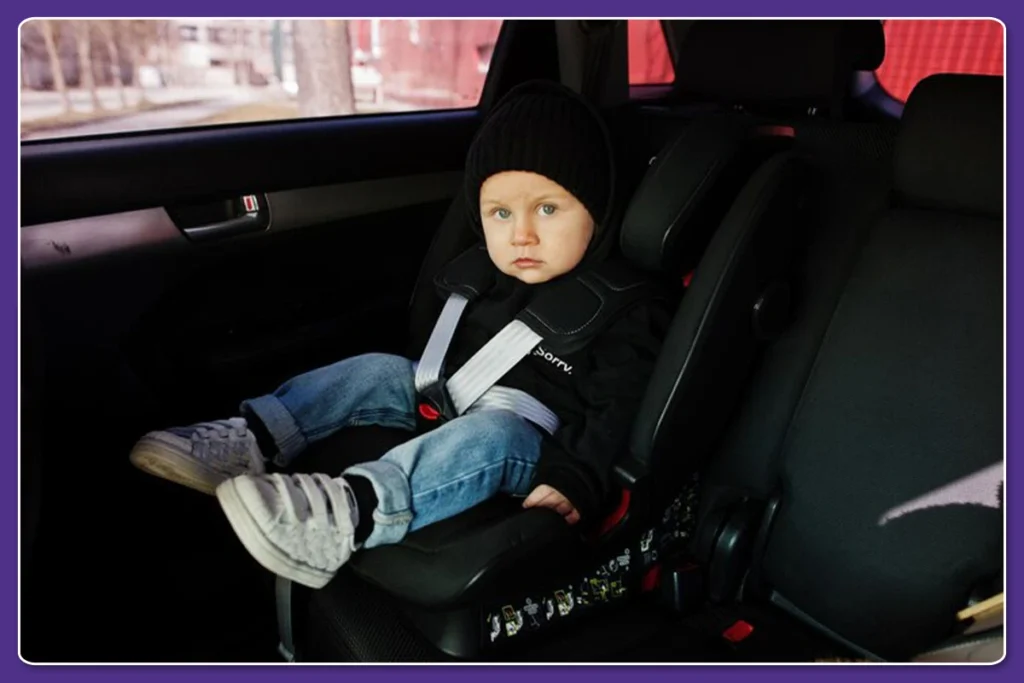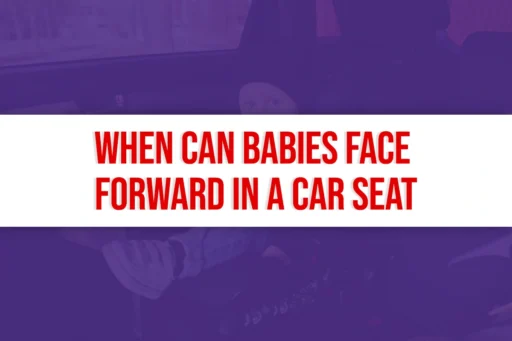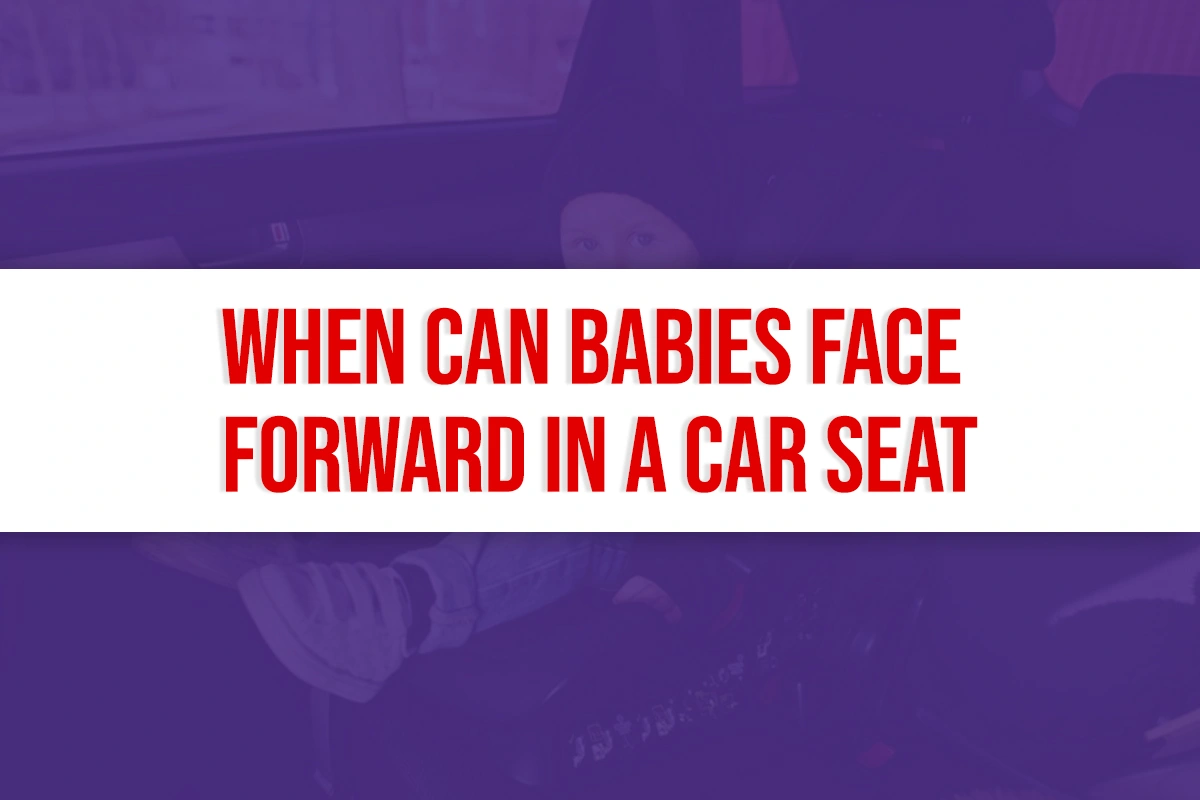Babies can face forward in a car seat once they reach a certain age and size. The exact timing depends on safety guidelines and laws in your region.
Understanding when to switch your baby to a forward-facing car seat is crucial for their safety. Many parents feel eager for this milestone, but it’s important to follow expert recommendations. In this blog post, we’ll explore the guidelines and factors you need to consider.
Knowing the right time ensures your child stays safe and secure on the road. Let’s dive into the details to help you make an informed decision for your little one’s well-being.

Age And Weight Recommendations
Parents often wonder when it’s safe for their baby to face forward in a car seat. Understanding age and weight recommendations is key to making this decision. Safety experts provide clear guidelines to help parents ensure their child’s safety.
Minimum Age Requirements
Experts agree that babies should remain rear-facing until at least two years old. This position supports their head, neck, and spine in a crash. Rear-facing car seats are designed to absorb impact forces better for young children.
Weight Considerations
Weight also plays a crucial role in determining when a baby can face forward. Most rear-facing car seats accommodate children up to 40 pounds. It’s essential to check your car seat’s manual for specific weight limits.
Some convertible car seats allow rear-facing up to 50 pounds. Keeping your child rear-facing as long as possible provides the best protection. Always consider both age and weight before transitioning to a forward-facing seat.
Developmental Milestones
Understanding developmental milestones is crucial when determining the right time for your baby to face forward in a car seat. These milestones indicate your baby’s physical and behavioral readiness for this transition. Let’s explore these milestones further.
Physical Readiness
Your baby’s physical readiness is key to ensuring their safety in a forward-facing car seat. Here are some signs to look for:
- Your baby is at least two years old.
- Your baby weighs a minimum of 22 pounds.
- Your baby can sit up without support.
These physical milestones show that your baby’s body is strong enough for the new seating position. Always check your car seat’s specific guidelines, as some models may have different requirements.
Behavioral Signs
Behavioral signs also play a role in deciding when your baby can face forward. Look for these indicators:
- Your baby stays calm in the car seat.
- Your baby can follow simple instructions.
- Your baby shows curiosity about the surroundings.
These behavioral milestones suggest that your baby is mentally prepared for the change. A calm and curious baby is less likely to fuss, making car rides safer and more enjoyable.
Types Of Car Seats
Choosing the right car seat for your baby is crucial for their safety. There are different types of car seats available, each with its own benefits and features. Understanding the types of car seats can help you make an informed decision for your child’s safety and comfort.
Rear-facing Seats
Rear-facing seats are the safest option for infants and toddlers. These seats face the back of the car, providing support to your baby’s head, neck, and spine in the event of a crash. Rear-facing seats are designed to absorb the impact and distribute the force evenly across the baby’s body.
- Infant-only seats: These are designed for newborns and small babies. They come with a handle for easy carrying.
- Convertible seats: These can be used as rear-facing seats for infants and then converted to forward-facing seats as the child grows.
Convertible Seats
Convertible seats offer flexibility and longevity. They can be used in multiple stages of your child’s growth. Convertible seats can be installed as rear-facing seats for younger children and then converted to forward-facing seats as the child becomes older. This makes them a cost-effective option for parents.
Convertible seats often come with additional features such as adjustable recline positions, higher weight limits, and extended rear-facing capabilities. This ensures that your child remains in the safest position for as long as possible.
| Feature | Rear-Facing | Forward-Facing |
|---|---|---|
| Weight Limit | Up to 40 lbs | Up to 65 lbs |
| Age Range | 0-2 years | 2+ years |
| Installation | Rear-facing position | Forward-facing position |
It’s important to follow the manufacturer’s guidelines for installation and use. Always ensure the car seat is properly secured and fits your child snugly.
Legal Regulations
Legal regulations around when babies can face forward in a car seat vary by location. It’s crucial to understand these rules to ensure your child’s safety and avoid any legal issues. Here’s a breakdown of the requirements in the US and internationally.
Us Laws
In the United States, each state has specific rules for car seats. The American Academy of Pediatrics (AAP) recommends that children should remain in a rear-facing car seat until at least the age of 2, or until they exceed the height or weight limit set by the car seat manufacturer.
Here’s a quick overview of the general guidelines:
- Age: Minimum of 2 years old
- Weight: Varies by car seat model
- Height: Ensure the child’s head is at least 1 inch below the top of the car seat
Parents should always check their state’s specific laws to ensure compliance.
International Standards
Different countries have their own regulations regarding car seats. Here’s a summary of some international guidelines:
| Country | Age Requirement | Additional Notes |
|---|---|---|
| Canada | 1 year | Must meet weight and height limits |
| UK | 15 months | Follow manufacturer’s guidelines |
| Australia | 6 months | Must meet weight and height limits |
Always follow the specific guidelines set by your country and the car seat manufacturer to ensure the highest level of safety for your child.
Safety Benefits Of Rear-facing
The safety benefits of keeping your baby rear-facing in a car seat are immense. Rear-facing car seats are designed to offer more protection during accidents. They support your baby’s head, neck, and spine, which are very delicate. Babies have larger heads compared to their bodies, making them more vulnerable during crashes. Keeping them rear-facing minimizes these risks.
Protection In Accidents
Rear-facing car seats are designed to absorb the force of a crash. They spread the impact over the entire body, reducing the stress on any single part. This design helps protect vital areas like the head, neck, and spine. Studies have shown that rear-facing seats reduce the risk of serious injury. This is because they cradle the baby during an accident, offering more protection.
Support For Head And Neck
Babies’ neck muscles are not fully developed. In a front-facing position, a sudden stop can cause their head to jerk forward. This can lead to serious injuries. Rear-facing seats provide much-needed support for the head and neck. They keep the head aligned with the spine, reducing the risk of whiplash. This support is crucial for your baby’s safety during travel.
Transitioning To Forward-facing
Transitioning your baby to a forward-facing car seat is a milestone. It marks a new phase in your child’s growth. Understanding when and how to make this switch is crucial for your baby’s safety.
When To Transition
Babies should ride rear-facing as long as possible. This position provides better support for their head, neck, and spine. According to the American Academy of Pediatrics, children should remain rear-facing until at least age 2, or until they reach the maximum height and weight limit of their car seat.
| Age | Weight | Height |
|---|---|---|
| 0-2 years | Up to 35 lbs | Up to 40 inches |
| 2 years and up | 35+ lbs | 40+ inches |
How To Make The Switch
When your child is ready to transition to a forward-facing car seat, follow these steps:
- Check the car seat manual for height and weight limits.
- Adjust the harness straps to fit snugly.
- Install the seat in the back seat of your vehicle using the LATCH system or seat belt.
- Ensure the car seat is at the correct recline angle to support your child’s head.
- Regularly check that the seat remains securely installed.
Making the switch safely involves careful attention. Always follow the manufacturer’s instructions and keep your child’s comfort in mind.
Common Mistakes To Avoid
Parents often wonder when their baby can face forward in a car seat. It’s crucial to avoid common mistakes to ensure your child’s safety. Here are some common errors parents make and how to avoid them.
Incorrect Seat Installation
One common mistake is not installing the car seat correctly. Many parents don’t read the manual. This can lead to improper installation. Make sure the seat is secured tightly. It should not move more than an inch side to side. Check the seat’s angle. Babies need a reclined position. This helps keep their airways open.
Premature Transitioning
Another error is transitioning to a forward-facing seat too soon. Babies should stay rear-facing until at least two years old. Check your car seat’s weight and height limits. Follow these guidelines strictly. Rear-facing seats protect the baby’s head, neck, and spine. Turning them too soon can lead to serious injuries in a crash.
Expert Tips For Parents
As a parent, you want to ensure your baby’s safety in the car. Knowing when to switch from rear-facing to forward-facing car seats can be confusing. Here are some expert tips to help you make the best decision for your child.
Ensuring Proper Fit
The car seat must fit your baby correctly. Always check the height and weight limits of the car seat. Your baby should stay rear-facing until they exceed these limits. This position offers better protection in a crash. Rear-facing seats cradle the head, neck, and spine.
Ensure the harness fits snugly. There should be no slack. You should not be able to pinch any harness material at the shoulder. The chest clip should be at armpit level. This keeps the harness in the right place during a crash.
Regular Safety Checks
Regularly inspect the car seat. Look for any signs of wear or damage. Check that the seat is securely installed. It should not move more than an inch side-to-side or front-to-back. If the seat moves, it needs tightening.
Ensure the car seat is up to date. Car seats have expiration dates. Materials can degrade over time, making the seat less effective. Also, replace the seat after any moderate or severe crash. Even if there is no visible damage, the seat may have unseen structural issues.
Always follow the manufacturer’s instructions. Each car seat model can have different requirements. These instructions provide the best guidance for using the seat safely.
Frequently Asked Questions
Babies should remain rear-facing until they are at least 2 years old. This ensures maximum safety. Check your car seat manual for specific weight and height limits.
The safest position for a baby car seat is the rear middle seat. This position offers the best protection in a collision.
Rear-facing car seats protect the baby’s head, neck, and spine in a crash. This position distributes the force of impact across the entire body.
Switch car seats when your child outgrows the height and weight limits. Always refer to the car seat manufacturer’s guidelines.
Conclusion
Ensuring your baby’s safety in the car is essential. Follow car seat guidelines closely. Babies can face forward after age two. Check your state’s laws too. Always prioritize your child’s well-being. Rear-facing seats offer better protection. Make informed decisions for your little one’s safety.
Stay updated with car seat regulations. Protect your baby on every journey. Remember, safety comes first.







